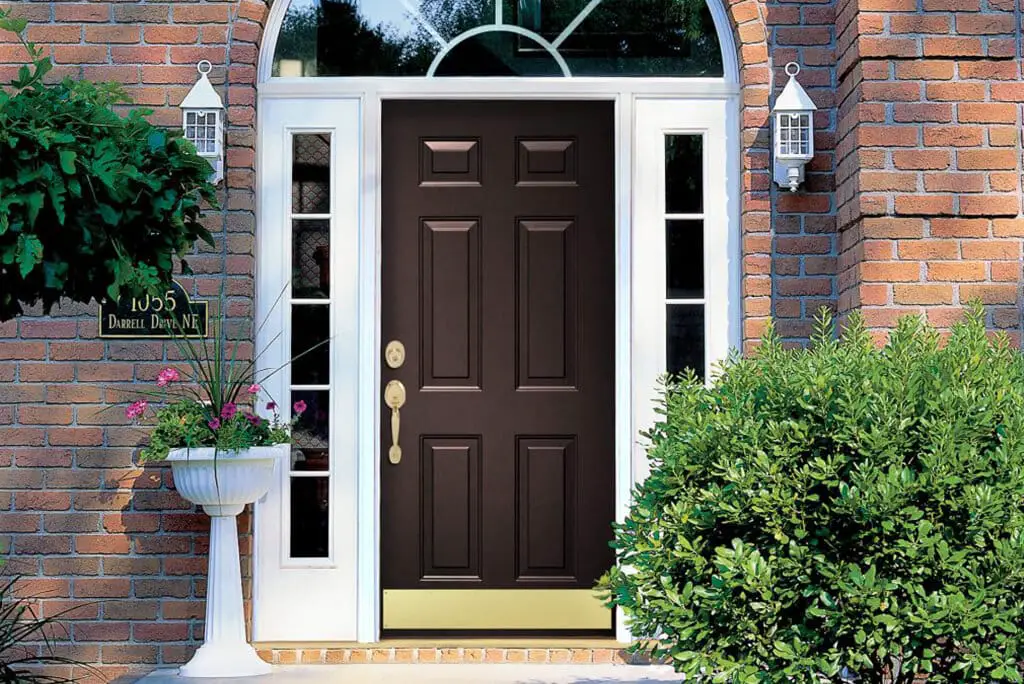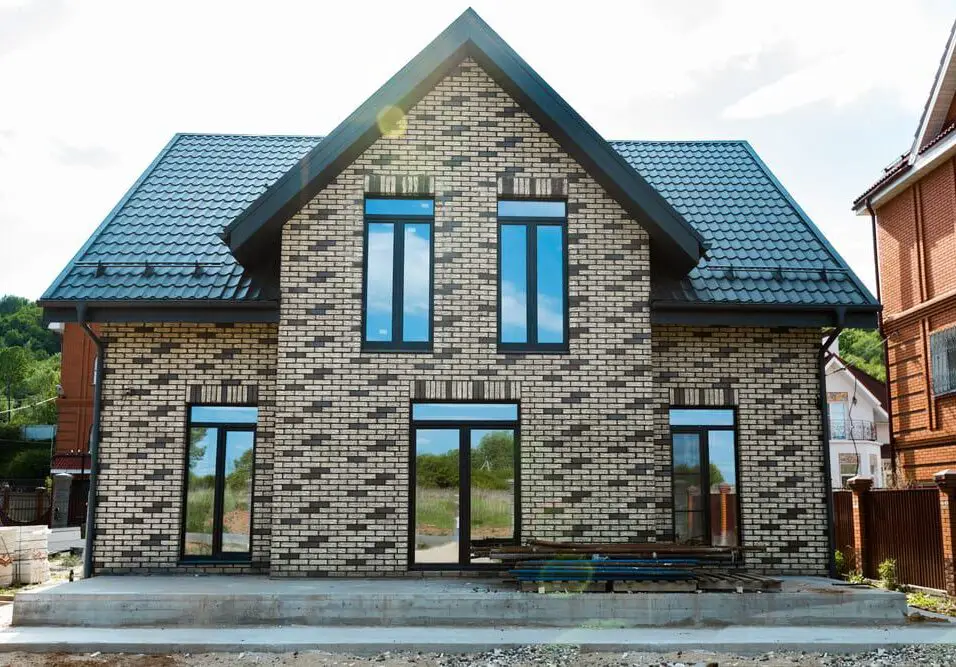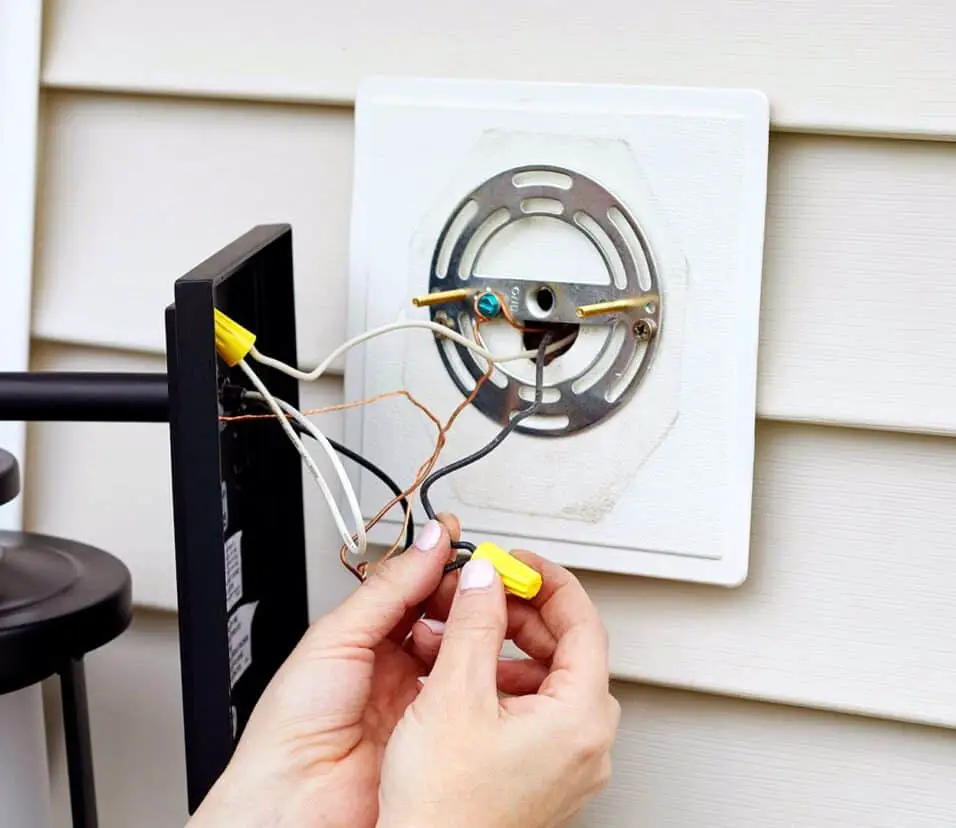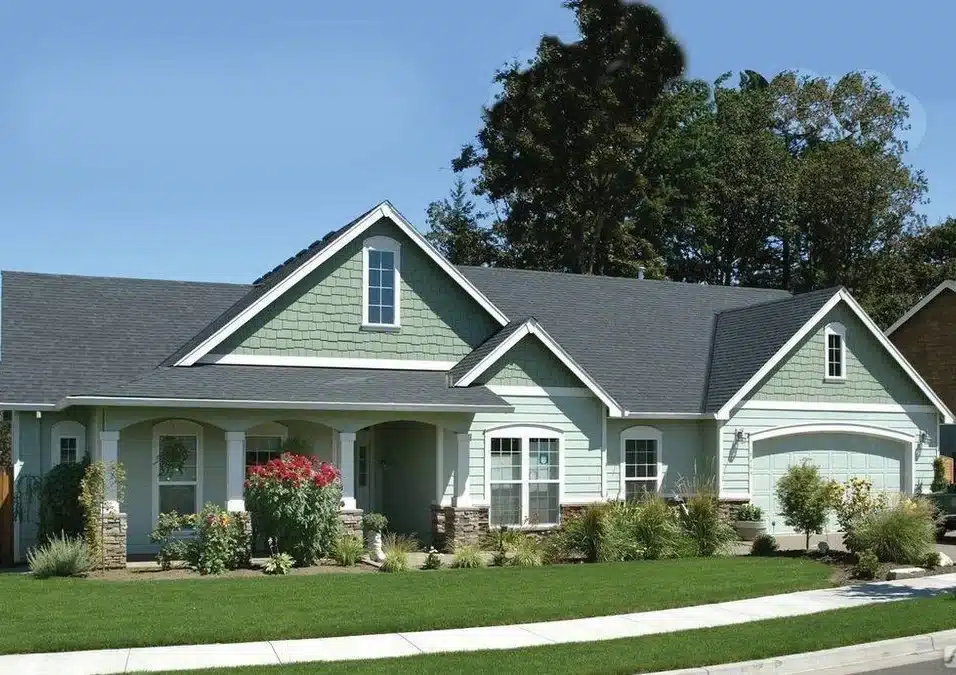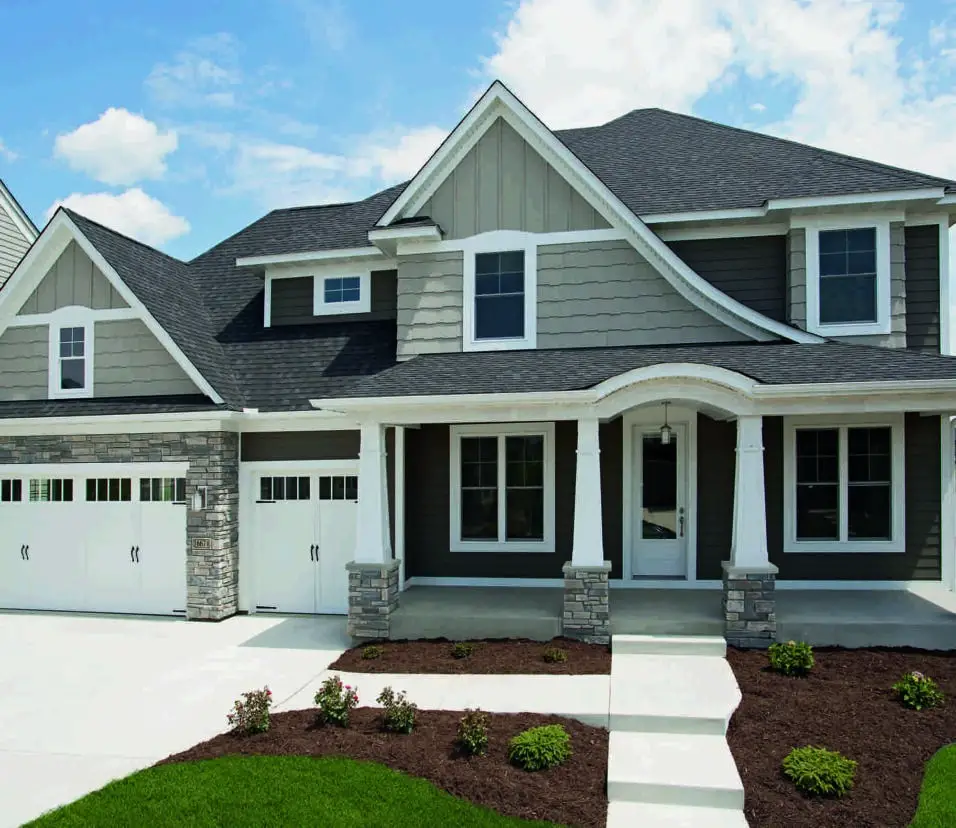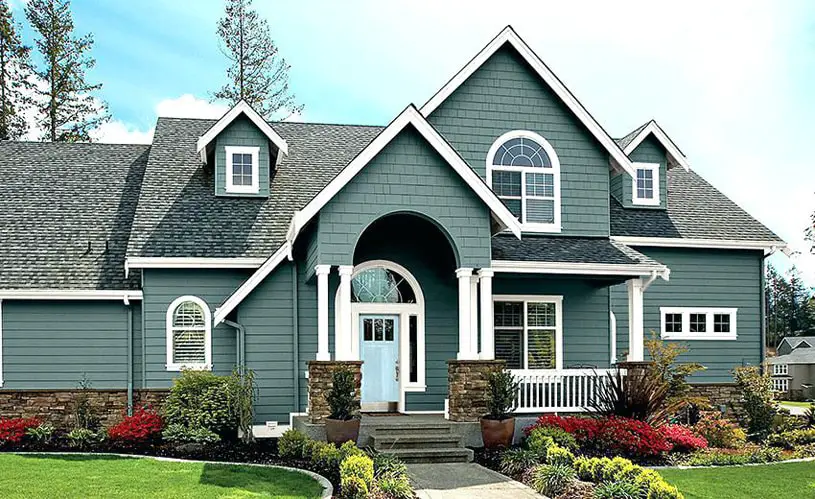How To Paint A Steel Door Exterior
Introduction
How To Paint A Steel Door Exterior: The perfect approach to painting a steel door exterior! This step-by-step lesson will help you update your home’s entrance or protect your steel door. We’ll help you choose materials, prep the surface, and finish professionally. Use our expert advice to change your steel door and boost your home’s curb appeal. Your front door is more than an entrance—it sets the tone for your home’s style. This step-by-step guide will help you restore the door’s look or protect it from the elements.
Your home’s first impression deserves to be a remarkable one, and what better way to achieve it than by revitalizing your steel door? From unraveling the nuances of material selection and surface preparation to expertly applying coats of exterior paint that stand the test of time, this guide is your go-to resource for mastering the process. Join us as we delve into the realm of steel door exterior painting, equipping you with the knowledge and skills needed to turn your door into a stunning focal point that boasts both beauty and durability.
Your home’s facade speaks volumes about your style and attention to detail, and a freshly painted steel door can significantly elevate its charm. In this guide, we’ll delve into the intricate process of transforming your door, from the initial considerations of paint selection and weather resistance to the final strokes that ensure a flawless finish. Get ready to unleash your inner artist and learn the art of painting a steel door to perfection, as we empower you with expert insights and techniques that promise to make your home’s entrance a masterpiece of curb appeal.
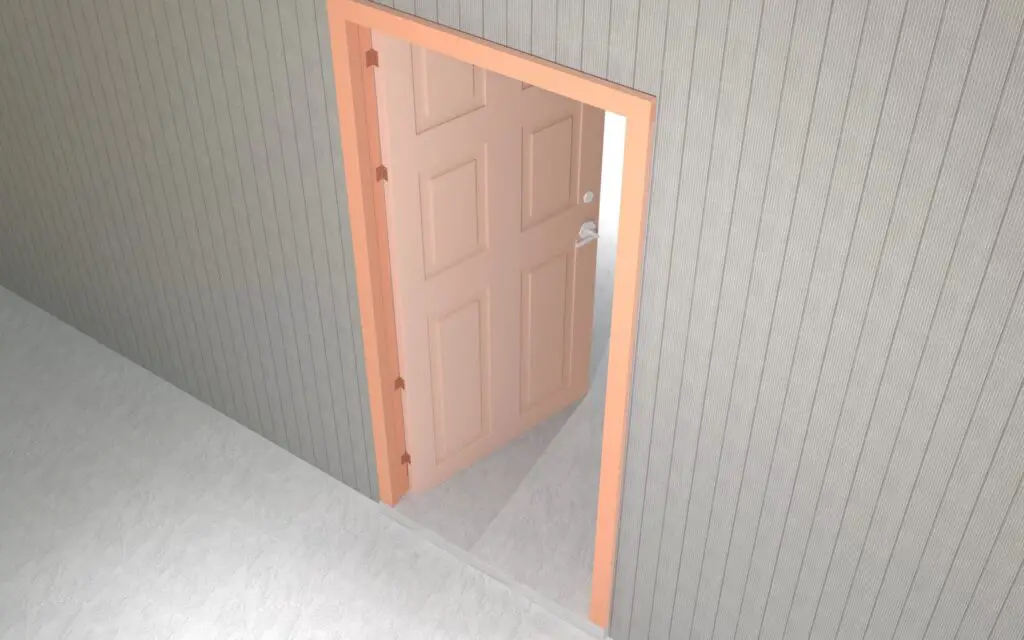
What kind of paint should I use on an exterior metal door?
In general, a latex-based or oil-based paint can work well in the interior, but for an exterior metal door, oil-based paint is a way to go. It is better suited to withstand the elements and provide a durable, long-lasting finish.
Choose an Exterior-Grade Paint: When painting an exterior metal door, it’s crucial to opt for paint specifically designed for outdoor use. Exterior-grade paints are formulated to withstand harsh weather conditions and provide better adhesion and durability than interior paints.
Look for All-Weather Protection: Consider paints labeled as “all-weather” or “exterior” paints. These paints are formulated to resist fading, cracking, peeling, and rusting, ensuring that your door maintains its appearance and integrity over time.
Opt for Acrylic or Latex-Based Paints: Acrylic or latex-based paints are popular choices for painting exterior metal doors. These paints offer excellent adhesion, flexibility, and resistance to cracking, and they dry relatively quickly. They also tend to be more environmentally friendly due to their low levels of volatile organic compounds (VOCs).
Consider Enamel or Oil-Based Paints: Enamel or oil-based paints are another viable option for exterior metal doors. These paints provide a hard, durable finish that can withstand heavy use and exposure to the elements. However, they do tend to take longer to dry and may have higher levels of VOCs compared to acrylic or latex-based paints
What kind of paint do you use on a steel door?
The Best Paint For Steel Door Projects
Water-based acrylic paints (also known as latex paints) and oil-based paints (also called solvent-based paints), as well as the majority of high-quality paints, should perform well on metal with the proper application technique.
Exterior-Grade Paint: When painting a steel door, it’s imperative to select a paint specifically designed for exterior use.
Enamel or Oil-Based Paints: Enamel or oil-based paints are excellent choices for painting steel doors. These paints offer exceptional durability, creating a hard and tough finish that can withstand daily use and exposure to the elements. They provide excellent adhesion and are resistant to chipping, peeling, and rust.
Rust-Inhibiting Paints: If the steel door is prone to rust or is already showing signs of rust, consider using a rust-inhibiting paint. These paints contain specialized additives that help prevent rust formation and offer an additional layer of protection against corrosion.
Direct-to-Metal (DTM) Paints: They often combine a primer and paint in one product, saving you time and effort. DTM paints provide excellent adhesion, rust resistance, and weather protection.
Can exterior steel doors be painted?
Metal door in indirect sun: If your door is not in the direct line of severe sunlight, use two or more coats of high-quality exterior acrylic-latex paint for painting your metal front door. Glossier paint sheens are easier to clean and last longer. Use semi-gloss or gloss paint for your front door.
Preparation is Key: Proper preparation is crucial when painting an exterior steel door. Clean the door thoroughly to remove dust, dirt, grease, and any loose or flaking paint. If there’s rust, use sandpaper or a wire brush to remove it. Sand the surface lightly to create a better surface for paint adhesion.
Choose the Right Paint: Selecting the right type of paint is essential for a successful paint job. Opt for paints labeled as “exterior” or “all-weather” to ensure they can withstand the outdoor elements. Enamel or oil-based paints are great choices due to their durability and ability to resist rust and moisture.
Primer Application: Primers improve paint adhesion, provide a uniform surface, and help prevent rust formation. Some paints come with built-in primers, making the process more efficient.
Consider Color: Choosing the right color for your exterior steel door can greatly impact your home’s curb appeal. Pick a color that complements the overall aesthetics of your home’s exterior while reflecting your personal style.
Weather Conditions: Check the weather forecast before painting. Ideally, choose a day with mild temperatures and low humidity.
Do I need to prime a steel door before painting?
Failure to use a high-quality paint with good blocking resistance may result in a door that sticks shut even after the paint has dries. Steel doors are factory-primed and do not need additional priming.
Enhanced Adhesion: Steel doors, especially those with a smooth or glossy finish, can be challenging for paint to adhere to directly. A primer creates a receptive surface that allows the paint to grip tightly, preventing peeling, chipping, and flaking over time.
Rust Prevention: Primers formulated for metal surfaces contain rust-inhibiting properties that help prevent the formation of rust. This added layer of protection is essential for the long-term durability of your door’s paint job.
Even Finish: Primers help create a consistent surface texture by filling in small imperfections and minor surface irregularities. This ensures that the final paint coat goes on more smoothly, resulting in a more even and professional finish.
Sealant Properties: Some primers have sealing properties that help prevent moisture infiltration into the steel door. A sealed surface reduces the risk of rust and paint damage caused by water penetration.
What paint is best for steel?
Oil-based paints are the most durable.
You’ll achieve a more uniform finish if you first apply an oil-based primer (e.g., Rust-Oleum Clean Metal Primer, $8.98 per quart on Amazon). However, you can apply oil paint directly to metal because it contains no water, and therefore there’s so no risk of rust.
Rust-Oleum Professional High-Performance Enamel Spray Paint
This enamel spray paint is specifically formulated for metal surfaces, offering excellent adhesion, rust prevention, and a durable finish. It’s available in various colors and provides a smooth, professional appearance.
Krylon Rust Protector Enamel Spray Paint
Another excellent option for steel surfaces, this spray paint provides a protective barrier against rust and corrosion. It’s quick-drying and comes in a range of colors, making it suitable for various steel applications.
Benjamin Moore Aura Exterior Paint
It offers a range of colors and finishes to suit your needs.
Rust-Oleum Stops Rust Protective Enamel Paint
This paint is specifically formulated to stop rust in its tracks and prevent further corrosion. It’s available in both spray and brush-on options and offers a durable, long-lasting finish.
What is the best paint finish for steel?
Oil-based paint: Oil paint is very durable, and is generally easier to clean. With oil-based, primer isn’t necessary, although it will give you a smoother finish.
Gloss Finish
Advantages: Gloss finishes, such as high-gloss or gloss, offer a shiny and reflective surface. They are highly durable and easy to clean, making them suitable for high-traffic areas and steel surfaces that require frequent cleaning.
Suitability: Gloss finishes are ideal for steel surfaces that need extra protection, such as outdoor furniture, railings, and equipment. They reflect light and can make the surface stand out, but keep in mind that imperfections can be more visible on a glossy surface.
Semi-Gloss Finish
Advantages: Semi-gloss finishes strike a balance between shine and durability. They offer some reflection without being overly reflective, and they are easier to maintain than high-gloss finishes.
Suitability: Semi-gloss finishes are versatile and work well for both indoor and outdoor steel surfaces.
Do you need special paint for steel?
As a starting point, you need to use paint specifically formulated for metal surfaces. This might be labeled as multi-surface paint or metal paint. If you don’t use this paint, it will peel, blister or flake, completely ruining your finish.
Adhesion: Steel surfaces can be smooth, slick, and difficult for regular paints to adhere to properly.
Corrosion Resistance: Steel is susceptible to rust and corrosion, especially when exposed to moisture and harsh weather conditions. Specialized paints for steel often contain rust inhibitors that create a barrier between the steel and the elements, preventing rust from forming and spreading.
Durability: Steel surfaces, whether indoors or outdoors, need a paint that can withstand wear, impact, and other physical stresses. Special paints for steel are designed to be more durable and resilient, making them suitable for high-traffic areas, machinery, equipment, and other steel applications.
Weather Resistance: Exterior steel surfaces are exposed to rain, UV rays, temperature changes, and other environmental factors that can cause regular paints to degrade over time. Special paints for steel are formulated to resist fading, cracking, and peeling when exposed to these conditions.
Can you paint a steel door with a brush?
Best way to paint a metal door without marks
Use a soft brush or a foam roller – These tools will help you eliminate the “brush texture” look and create a consistent finish. Check the weather – If you’re painting a metal door outside, make sure there isn’t going to be any rain that could ruin your work.
Gather Your Materials
High-quality paintbrush: Choose a brush with synthetic bristles specifically designed for use with latex or oil-based paints, depending on the type of paint you’re using.
Paint: Opt for a paint formulated for metal surfaces, such as an exterior-grade enamel or acrylic paint. Ensure it’s suitable for the type of steel door you have (e.g., primed or unprimed).
Surface Preparation
Clean the door: Remove dirt, dust, grease, and any loose or flaking paint from the door’s surface. A clean surface ensures proper paint adhesion.
Sanding: Lightly sand the door’s surface to create a slightly rough texture. This helps the paint adhere better and provides a smoother finish.
Primer
If your steel door is not pre-primed, consider applying a metal primer. This step enhances adhesion and prevents rust formation.
Follow the primer manufacturer’s instructions for application and drying time.
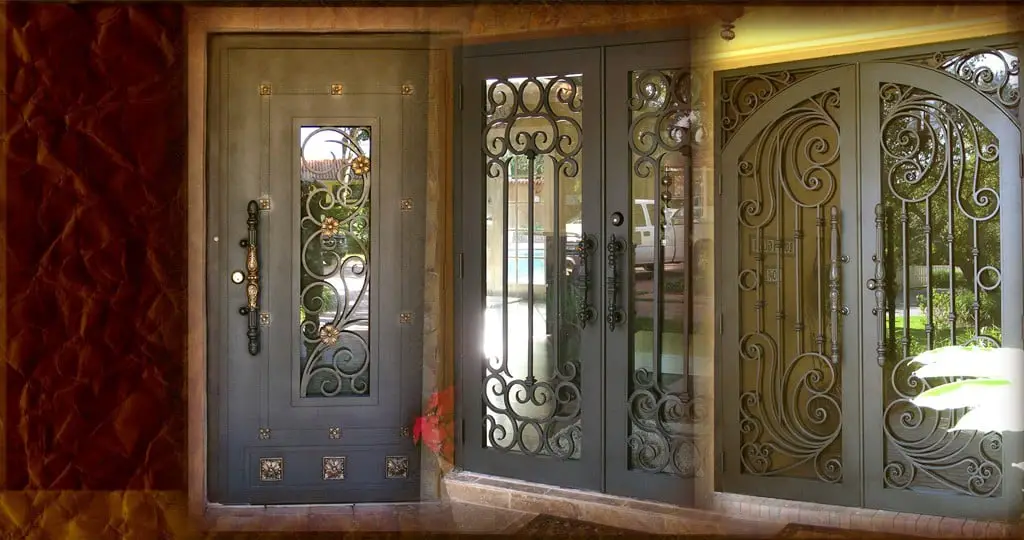
Conclusion
As you cross the threshold of your newly painted steel door, take a moment to relish in the transformation you’ve accomplished. Your dedication to detail has paid off, and your home now radiates a renewed charm that’s bound to leave a lasting impression on all who visit. Here’s to your beautifully painted steel door and the inspiration it carries – a testament to the remarkable difference a little paint and a lot of heart can make. The journey of painting a steel exterior door has been one of both artistry and practicality. What was once a simple surface has now evolved into a testament to your craftsmanship and dedication to maintaining your home’s allure.
Throughout this guide, we’ve walked you through the essential steps, from the initial considerations of color choice and weather resistance to the final strokes that have brought your door to life. Your efforts have not only breathed new life into your door but have also revitalized your home’s overall aesthetic. As you gaze upon your finished project, take pride in knowing that you’ve not only added a fresh coat of paint metal but a touch of your personality to your home’s facade.
Your steel door now stands as a symbol of your commitment to both the functional and visual aspects of homeownership. So, step back and relish in your accomplishment. Your meticulously painted steel door is now more than just an entryway; it’s a reflection of your dedication to making your home a welcoming and captivating space. May your newly painted steel door continue to inspire you, impress your guests, and serve as a reminder of the transformative power of a little paint and a lot of passion.



